





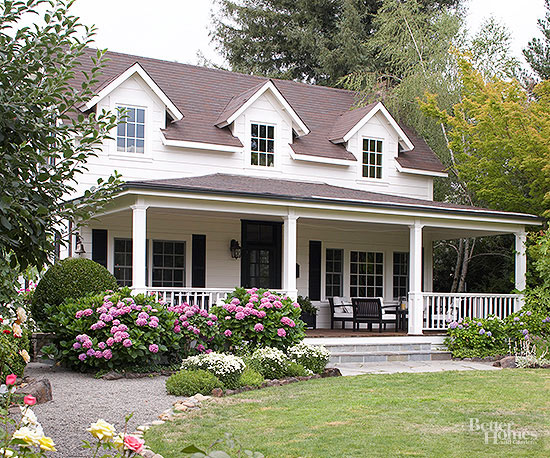
One of the first things to consider when designing an entry garden is how well it matches the architecture of the house. An important consideration throughout the garden, this is vital at the entry. For most homes, an entry garden is the most public garden space. The design of the entry garden sets a mood. A pair of carefully pruned boxwoods in containers flanking the front door speaks of order and formality. A mixed border sets a more relaxed tone.
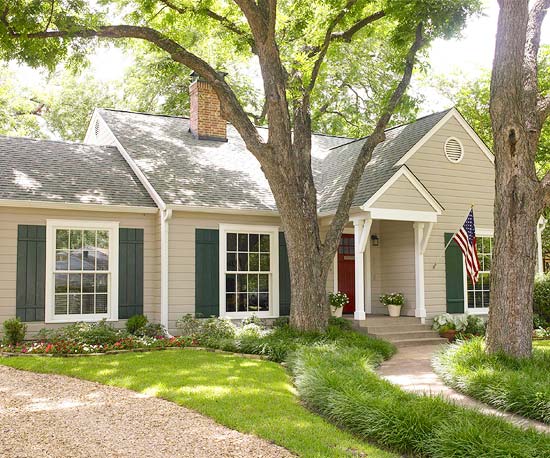
Because the majority of garden design and activity takes place in the backyard, it is perfectly acceptable to have a formal entry garden to match a traditional house and foundation planting in the front yard, and a loose, more informal garden style in the back of the house.
An entry garden, whether simple or complex, should draw your eye toward the front door.
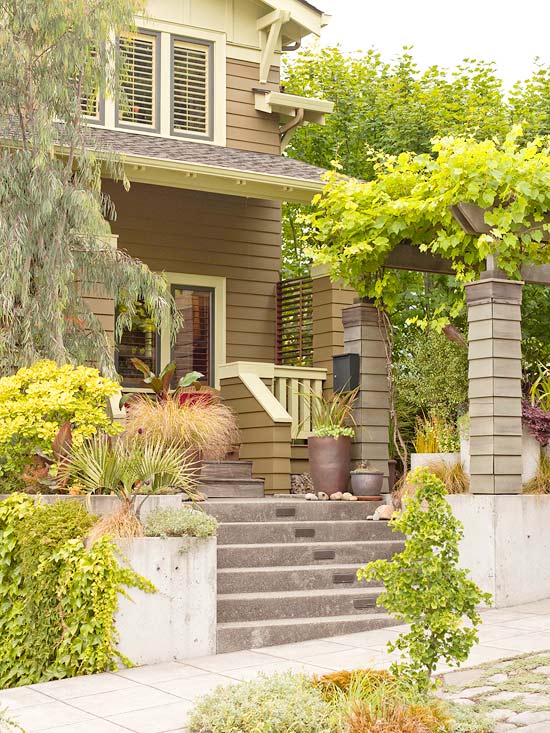
Another consideration is scale. An entry garden offers the opportunity to create a transition from an open garden or lawn without a ceiling to the more intimate, human scale of the interior of the home. Tricks for doing this include narrowing a walk as it approaches the front door. This tapering of the paving focuses attention on the entry itself. You can expand the area right around the door so you have ample room to gather as you say your hellos and good-byes.
You could also use a series of transitional spaces, such as an arbor or a short flight of stairs. Linking spaces or outdoor rooms gradually moves a visitor down in scale from larger exterior spaces to a smaller interior space.
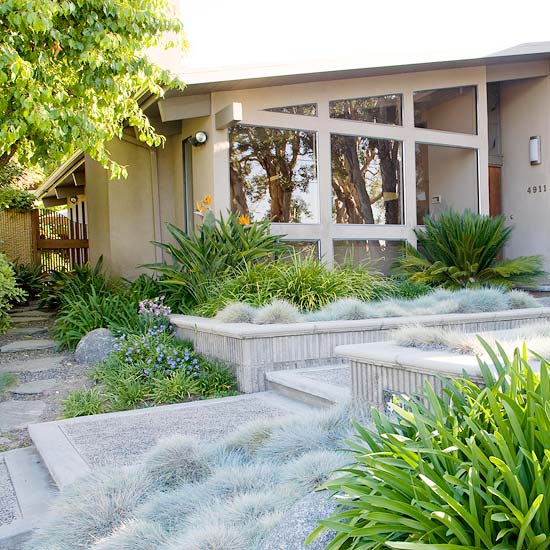
The planting plan of an entry garden requires careful thought, from choosing the right size and position of plants that create the scale you want, to choosing the plants themselves. Visitors waiting to enter your home will be close to the plants you have selected. Take advantage of this captive audience to use a range of colors, textures, and shapes to hold their interest and maybe even surprise them.
Fragrant plants are ideal for entry gardens. They smell good for your guests and scent the house every time the door is opened.
One role of an entry garden is to mark the beginning of the path to your front door. Flanking this point with substantial shrubs or mass groupings of perennials is one way to call attention to it.
Fragrant flowers for your garden.
Consider using plants that are inviting to touch. Ferns, soft-needle conifers, and some ornamental grasses fill the bill. Avoid thorny or spiky plants, such as yucca or cotoneaster, right by an entry.
If your entryway is covered or otherwise has limited access to sunlight, be sure to select plants that will thrive in shade or partial shade. Caladium and impatiens are two examples of plants that can brighten a shady entry.
The best perennials for the shade.
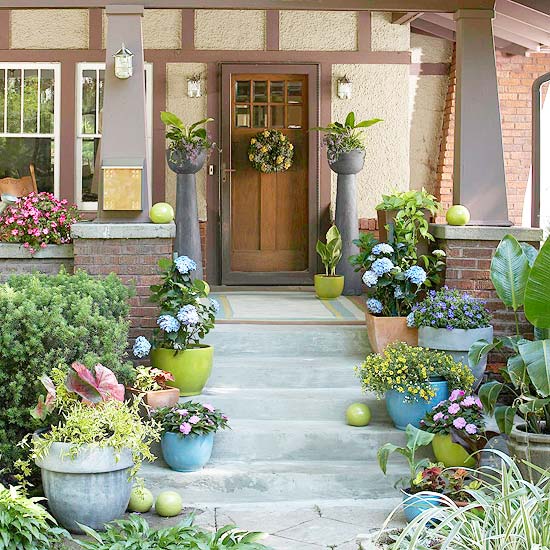
Another way to add color to the entry is with plants in containers. Container planting allows you to change the color easily from season to season, perhaps starting with an array of bulbs in spring, followed by annuals the rest of the year. Container plants are especially helpful if the entry is shady. You can also plant duplicate containers of sun-loving annuals, keeping one in a sunny part of the garden and the other by the door, and rotating them weekly.
Container garden recipes for shade.

An overhead canopy is helpful in the transition from garden to home, especially if the structure is about the same height as the ceiling of the room you enter. A canopy also keeps you and your guests dry upon entering your home.
If you have an overhead structure, either at the entry itself or along the pathway to the entry, consider covering it with a vine or other climbing plant. A bower of green can soften a stark structure.
Stylish arbor designs.
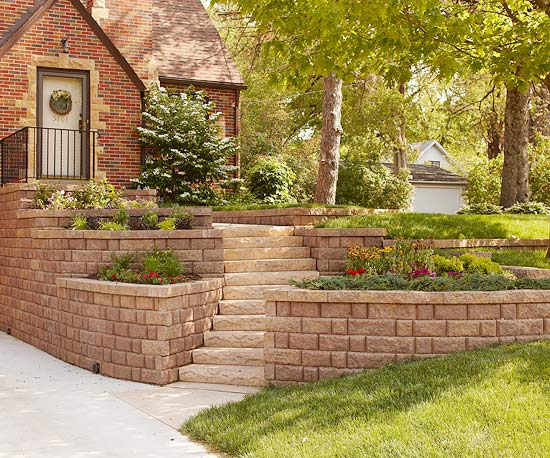
Because the entry garden is visible to all who come to your home, and because guests have time to take in this garden, maintenance is an important concern in planning and design. Be realistic about how much maintenance you're willing to do and design accordingly. Even if you aren't installing an irrigation system or lighting anywhere else in the garden, consider it for the entry garden. This will help the area look attractive year-round.
Hardscape needs maintenance, too. Cracked concrete and loose or missing bricks make a poor (and potentially unsafe) first impression. Add a weekly inspection of the entry as part of your gardening routine.
What Is A Nightscape: Learn How To Create A Nightscape Garden
What Is A Jewish Garden: How To Create A Jewish Biblical Garden
Japanese Zen Gardens: How To Create A Zen Garden
Welcoming Wildlife In The Garden: How To Create A Wildlife Garden
Colorful Front Entry Garden Plan
Copyright © www.100flowers.win Botanic Garden All Rights Reserved